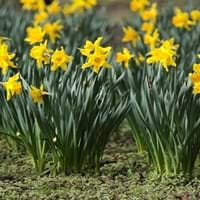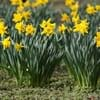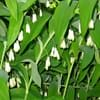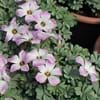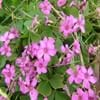Life Span
Perennial
Perennial
Type
Bulb or Corm or Tuber
Herbs
Origin
Hybrid origin
Europe, Asia
Types
narcissus triandricus, narcissus poeticus
Not Available
Number of Varieties
Not Available
Habitat
Hills, Humid climates, meadows
Dry areas, Roadsides, stream banks, Stream side, Waste areas
USDA Hardiness Zone
4-9
3-7
Sunset Zone
21,22
1a, 1b, 2a, 2b, 3a, 3b, 4, 5, 6, 7, 8, 9, 10, 11, 12, 13, 14, 15, 16, 17, 18, 19, 20, 21, 22, 23, 24
Habit
Clump-Forming
Clump-Forming
Flower Color
Yellow, Peach
White, Lavender
Flower Color Modifier
Bicolor
Bicolor
Fruit Color
Not Available
Sandy Brown
Leaf Color in Spring
Green
Gray Green, Gray
Leaf Color in Summer
Light Green
Gray Green, Gray
Leaf Color in Fall
Several shades of Green
Gray Green, Gray
Leaf Color in Winter
Light Green
Light Green
Leaf Shape
Linear
Arrowhead
Plant Season
Spring
Spring, Summer, Fall
Sunlight
Full Sun, Partial Sun
Full Sun, Partial Sun
Type of Soil
Loam, Sand
Clay, Loam, Sand
The pH of Soil
Acidic, Neutral, Alkaline
Acidic, Neutral, Alkaline
Soil Drainage
Well drained
Well drained
Bloom Time
Spring, Late Spring
Summer, Late Summer, Early Fall
Tolerances
Dry soil, Shallow soil
Drought, Dry soil
Where to Plant?
Container, Ground
Container, Ground
How to Plant?
From bulbs, Transplanting
Seedlings
Plant Maintenance
Medium
Low
Watering Requirements
Do not let dry out between waterings, Never Over-water
Do Not over Water, Never Over-water, Requires regular watering, Water when soil is dry
In Summer
Moderate
Lots of watering
In Spring
Less Watering
Moderate
In Winter
Less Watering
Average Water
Soil pH
Acidic, Neutral, Alkaline
Acidic, Neutral, Alkaline
Soil Type
Loam, Sand
Clay, Loam, Sand
Soil Drainage Capacity
Well drained
Well drained
Sun Exposure
Full Sun, Partial Sun
Full Sun, Partial Sun
Pruning
Do not prune during shooting season, No pruning needed
Prune if you want to improve plant shape, Prune in spring, Remove damaged leaves, Remove dead leaves
Fertilizers
All-Purpose Liquid Fertilizer, as it is a flowering plant, use high phosphorous content fertilizer
fertilize every 2-3 weeks while growing, fertilize in growing season
Pests and Diseases
Caterpillars, Mites, Narcissus Basal Rot, Narcissus Bulb Fly, Viruses
Caterpillars, Leaf Hoppers, Nematodes, Spider mites
Plant Tolerance
Light Frost
Drought, Frost
Flower Petal Number
Single
Single
Fragrant Bark/Stem
No
Yes
Foliage Texture
Medium
Medium
Foliage Sheen
Matte
Matte
Attracts
Bees, Birds, Butterflies, Caterpillar, Leaf Hoppers
Flying insects, Insects, Spider Mites
Allergy
Diarrhea, Dizziness, Nausea, Vomiting, wheezing
Avoid during Pregnancy, Headache, Stomach pain, Vomiting
Aesthetic Uses
Beautification, Bouquets, Decorating walls, Showy Purposes
Beautification, Landscape Designing, Showy Purposes
Beauty Benefits
Acne, Skin cleanser
Not Available
Environmental Uses
Provides ground cover
Air purification
Medicinal Uses
Antiseptic, Antispasmodic, Fertility, Joint pain, Wounds
Arthritis, Cold, constipation, Fever, Insomia, Migraines, Upset stomach
Part of Plant Used
Flowers, Leaves
Whole plant
Other Uses
Beneficial species for attracting pollinators, Making Perfumes, Showy Purposes
Air freshner, Decoration Purposes, Employed in herbal medicine, Making Perfumes, Making Shampoo, Making Sweet Scented Oil, Medicinal oil, Used as Ornamental plant, Used for its medicinal properties
Used As Indoor Plant
Sometimes
Yes
Used As Outdoor Plant
Yes
Yes
Garden Design
Container, Cutflower, Feature Plant, Foundation, Lawns and Turf, Mixed Border, Rock Garden / Wall
Container, Herb / Vegetable, Mixed Border
Botanical Name
NARCISSUS 'Baby Moon'
NEPETA cataria
Common Name
Jonquil, Jonquilla
Cat Nip, Catnip
In Hindi
नरगिस (फूल)
कटनीप
In German
Narzissen
Katzenminze
In French
Narcissus
cataire
In Spanish
Narcissus
Catnip
In Greek
Not Available
Είδος δυόσμου
In Portuguese
Narcissus
catnip
In Polish
Narcyz
Kocimiętka
In Latin
Narcissus
catnip
Phylum
Magnoliophyta
Magnoliophyta
Class
Liliopsida
Magnoliopsida
Family
Amaryllidaceae
Lamiaceae
Clade
Monocotyledonous
Angiosperms, Asterids, Eudicots
Tribe
Not Available
Mentheae
Subfamily
Lilioideae
Nepetoideae
Season and Care of Jonquil and Catnip
Season and care of Jonquil and Catnip is important to know. While considering everything about Jonquil and Catnip Care, growing season is an essential factor. Jonquil season is Spring and Catnip season is Spring. The type of soil for Jonquil is Loam, Sand and for Catnip is Clay, Loam, Sand while the PH of soil for Jonquil is Acidic, Neutral, Alkaline and for Catnip is Acidic, Neutral, Alkaline.
Jonquil and Catnip Physical Information
Jonquil and Catnip physical information is very important for comparison. Jonquil height is 15.20 cm and width 7.60 cm whereas Catnip height is 980.00 cm and width 60.00 cm. The color specification of Jonquil and Catnip are as follows:
Jonquil flower color: Yellow and Peach
Jonquil leaf color: Green
Catnip flower color: White and Lavender
- Catnip leaf color: Gray Green and Gray
Care of Jonquil and Catnip
Care of Jonquil and Catnip include pruning, fertilizers, watering etc. Jonquil pruning is done Do not prune during shooting season and No pruning needed and Catnip pruning is done Prune if you want to improve plant shape, Prune in spring, Remove damaged leaves and Remove dead leaves. In summer Jonquil needs Moderate and in winter, it needs Less Watering. Whereas, in summer Catnip needs Lots of watering and in winter, it needs Average Water.
